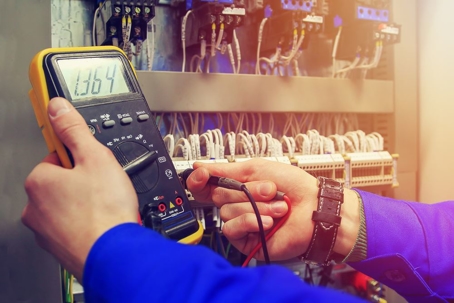If you’ve ever touched an electric fence or been pranked with a shock pen, you know what a mild electric shock feels like. Most electrical injuries, however, are much more serious. According to the Occupational Health and Safety Administration (OSHA), electricity is the fourth leading cause of injury-related occupational death.
The types of electrical injury include:
- Electric shock
- Burns
- Electrocution
- Falls
Keep reading to learn more about each.
Electric Shock
When an electrical current passes through your body, it destroys muscle, nerves, and tissues. Electric shock is a reflex response that typically involves burns, abnormal heart rhythm, and unconsciousness.
The severity of your electric shock injury will depend on the voltage of the electricity source and the strength of the electric current.
Burns
Electrical burns are the most common shock-related, nonfatal injury. You will get an electrical burn if you touch energized electrical wiring or equipment. Most electrical burns occur on the hands and feet, but electrical burns can happen anywhere inside or outside of the body.
Electrocution
Fatal electric shock injuries are referred to as electrocution. Electricity can cause ventricular fibrillation (the heart stops pumping), cardiac arrest, and respiratory failure. Intense currents can also cause involuntary muscle contractions that prevent someone from breaking free of the source of electricity. When muscular control is lost, individuals cannot let go and fatalities are more likely.
Falls
Sometimes, electrical injury is indirect. For example, someone may contact electricity, jerk away, and fall. Falls can be extremely serious if someone is working on a ladder or falls from a height. Electrical explosions can also cause people to lose their balance and fall.
What Causes Electrical Injury?
Contact with overhead power lines is the most common cause of electrocution, followed by failure to properly de-energize electrical equipment, and mistakes in wiring, re-wiring, or misidentified wiring.
Lightning and contact with low-voltage and high-voltage electricity sources can also cause electrical injury. Low-voltage injuries may occur due to small appliances, extension cords, and wall outlets and are the most common among children, especially toddlers and adolescents.
High-voltage injuries are most common among workers.
Who Is Responsible for Electrical Injury?
Manufacturers are often responsible for low-voltage injuries because they have a duty to keep users safe and prevent electric shock.
Employers are usually responsible for high-voltage injuries because they failed to uphold workplace safety standards.
If you have been shocked or burned – or lost a loved one to electrocution – you should find out what went wrong and hold the proper party (or parties) accountable.
An electrical injury can affect your physical, mental, and neurological health or take away the person you love the most, and you should not have to live with the consequences of an accident you did not cause.
At Palmisano & Goodman, P.A., we help people who have been harmed by defective wiring, unsafe working conditions, and other forms of negligence move forward. We have upheld a tradition of superb service and results since 1974, and we do not charge legal fees unless we win.
Tell us about your case during a free consultation and get the honest advice, energetic representation, and personal attention you deserve during this difficult time – call us at (732) 709-4400 or contact us online to schedule yours today.

